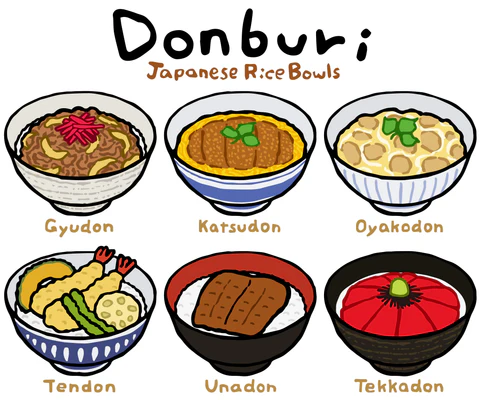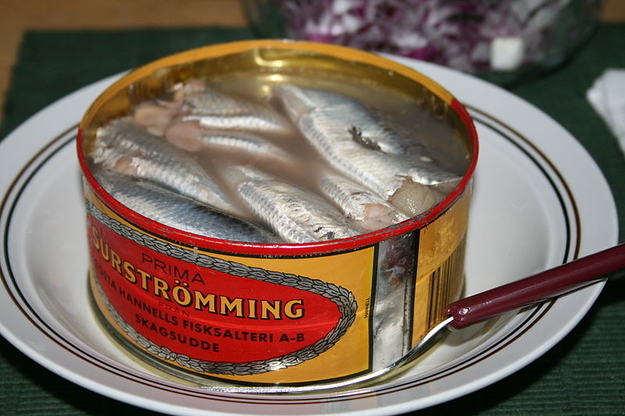solsticeuniversity.com – Donburi (丼), meaning “bowl” in Japanese, is a quintessential comfort food in Japanese cuisine. This simple yet versatile dish consists of a bowl of rice topped with a variety of ingredients, from savory meats and fresh seafood to vegetables and eggs. Loved for its hearty portions and endless customization, donburi has become a staple in homes, restaurants, and street markets across Japan.
The Origins of Donburi
Donburi has its roots in the Edo period (1603–1868), when Japan’s culinary culture began to diversify. The concept of serving rice with toppings in a bowl offered a quick, satisfying meal for busy workers. Over time, regional variations and specialized versions emerged, each reflecting the ingredients and preferences of the area.
Key Ingredients and Variations
What makes donburi special is its adaptability. The base is always steamed white rice, but the toppings vary widely. Here are some popular types of donburi:
- Gyūdon (Beef Bowl)
Thinly sliced beef cooked in a savory-sweet sauce of soy sauce, sugar, and mirin, often topped with onions and a raw egg or pickled ginger. - Katsudon (Pork Cutlet Bowl)
A breaded and fried pork cutlet (tonkatsu) served over rice with a lightly cooked egg and dashi-based sauce. This dish is often associated with good luck, especially for students before exams. - Tendon (Tempura Bowl)
A variety of tempura, including shrimp and vegetables, placed atop rice and drizzled with a sweet soy-based sauce. - Oyakodon (Parent and Child Bowl)
Made with chicken and eggs simmered in a dashi broth, this dish symbolizes the bond between parent and child, hence the name. - Unadon (Eel Bowl)
Grilled eel (unagi) glazed with a sweet soy-based sauce, served over rice. Unadon is particularly popular during the summer to boost stamina. - Kaisendon (Seafood Bowl)
A sashimi-style donburi, featuring fresh slices of raw fish and seafood such as salmon, tuna, shrimp, and roe, often garnished with seaweed and wasabi.
How Donburi is Made
Donburi is easy to prepare, making it a go-to meal for home cooks and chefs alike. The process generally involves:
- Cooking the Rice: A perfect bowl of rice is essential, as it serves as the foundation of the dish. Japanese short-grain rice is typically used for its sticky and fluffy texture.
- Preparing the Toppings: Whether grilling, simmering, or frying, the toppings are cooked separately, often seasoned with traditional Japanese sauces like soy sauce, mirin, and dashi.
- Assembling the Bowl: The cooked rice is placed in a bowl, topped with the prepared ingredients, and garnished with optional extras like green onions, nori (seaweed), or sesame seeds.
Cultural Significance of Donburi
Donburi embodies the essence of Japanese cuisine: simplicity, balance, and appreciation for seasonal ingredients. Its versatility has made it a beloved meal for all occasions, from casual lunches to celebratory dinners.
Donburi also plays a role in Japan’s regional food culture. For example, Hokkaido is known for its luxurious seafood bowls, while Nagoya is famous for hitsumabushi, a style of eel donburi served with green tea broth.
Donburi Around the World
As Japanese cuisine has gained global popularity, so has donburi. International variations have emerged, incorporating local flavors and ingredients while maintaining the essence of the dish. Restaurants worldwide now serve donburi-inspired rice bowls, showcasing its universal appeal.
Conclusion
Donburi is more than just a meal—it’s a celebration of flavor, creativity, and tradition. Whether you’re savoring a steaming bowl of gyūdon on a cold day or enjoying a refreshing kaisendon by the seaside, donburi offers a taste of Japan that is comforting, delicious, and endlessly adaptable.
Next time you’re craving Japanese food, dive into the world of donburi and discover the magic of these humble yet satisfying rice bowls!




